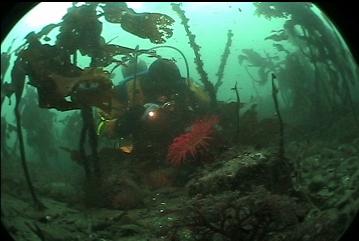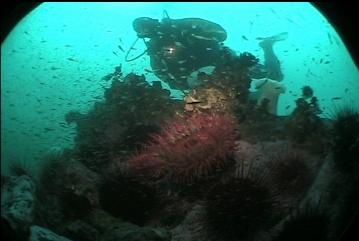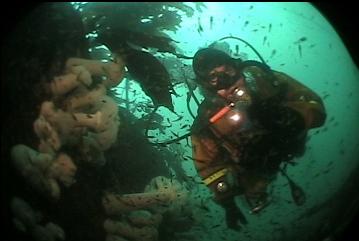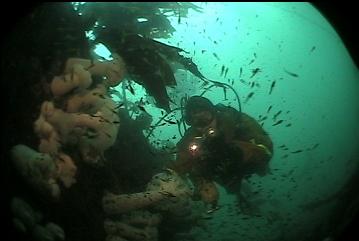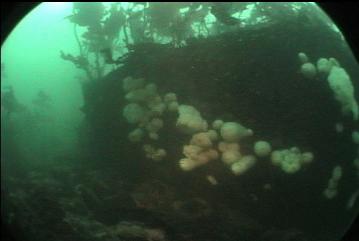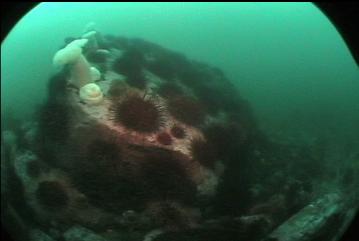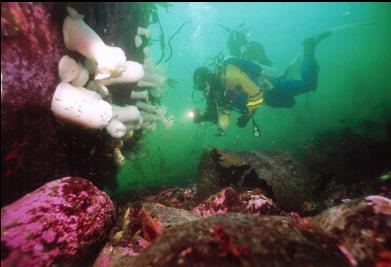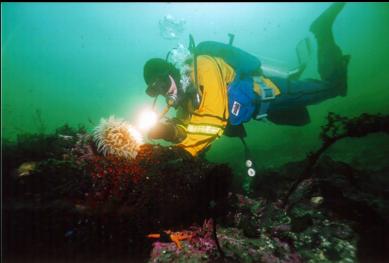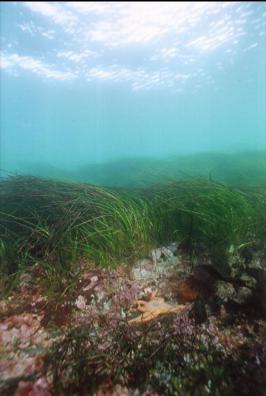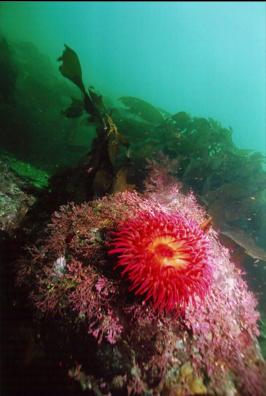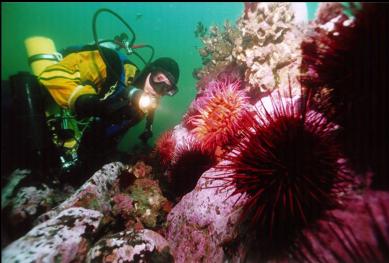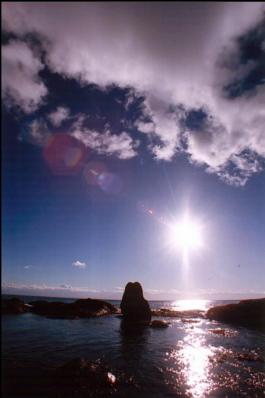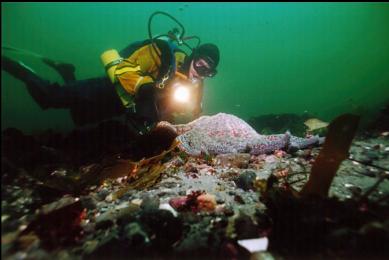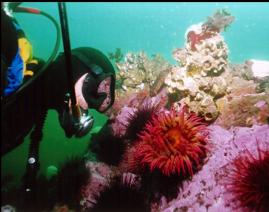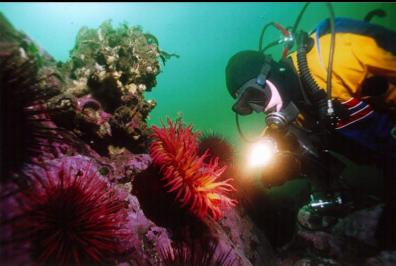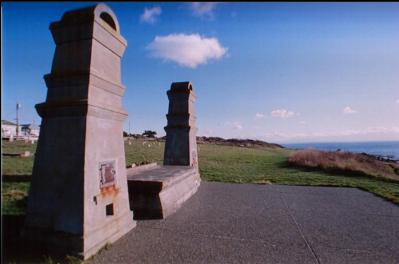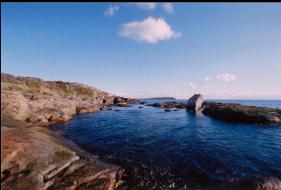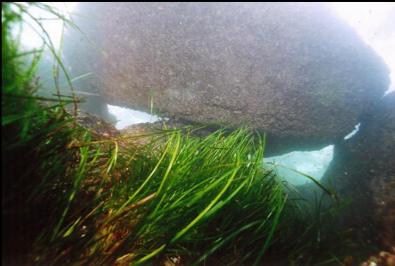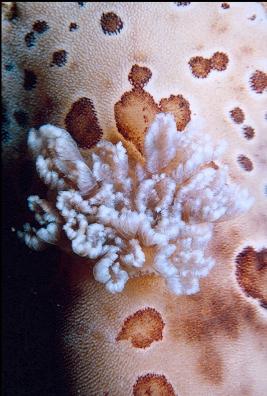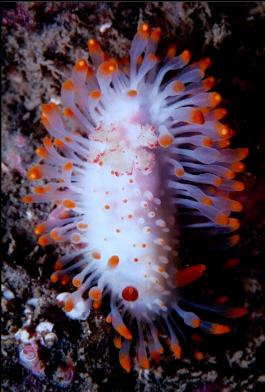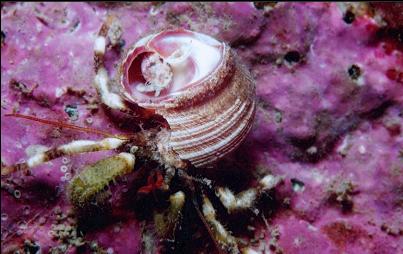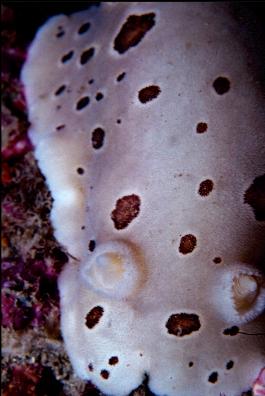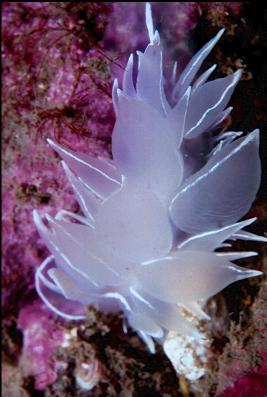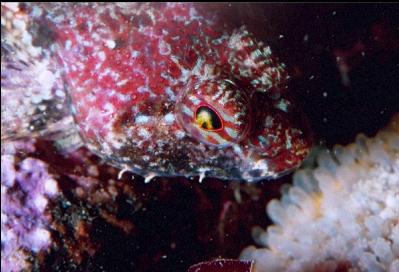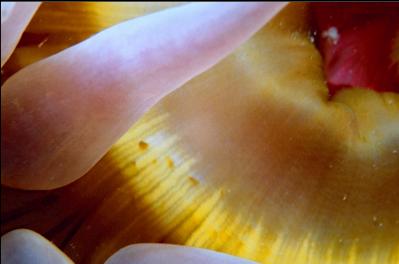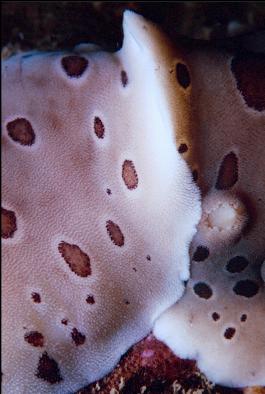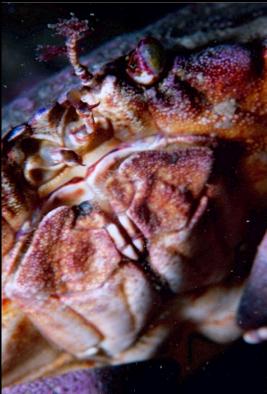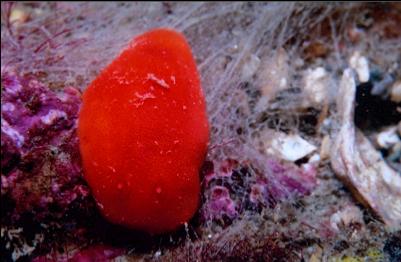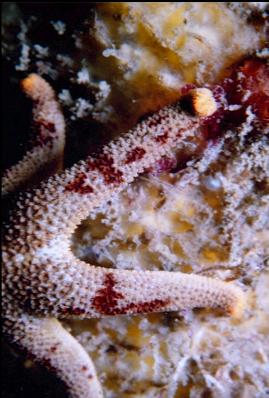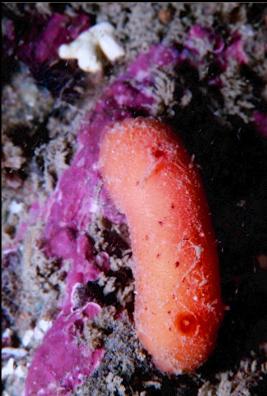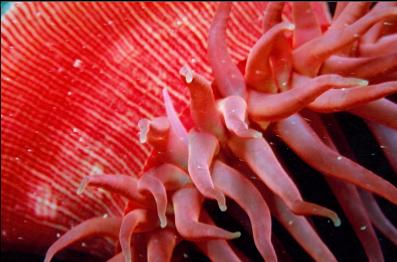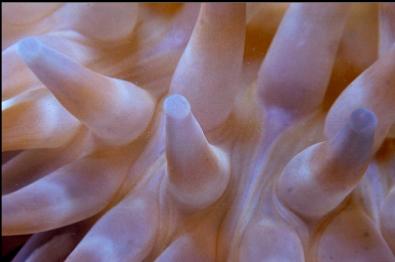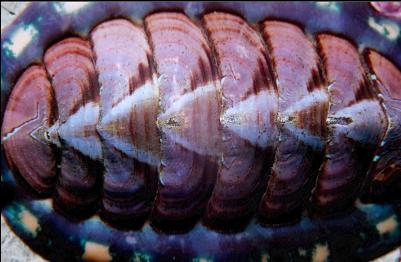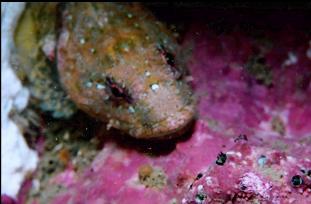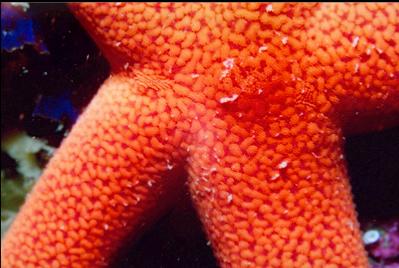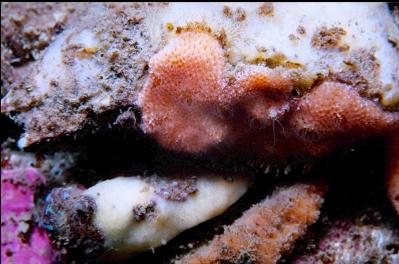Harling Point is on the East side of Crescent Bay in the Oak Bay neighborhood of Victoria. If you drive to the end of Crescent Road, there is the old Chinese cemetery and room for a few cars to park next to the fence. The water is a few steps away. I did a couple of dives here near the end of November, 2005. According to the chart, there can be up to 3 knots of current off the point so I dove here on slack. There is no dramatic wall here, just a nice, mostly-flat bottom with small reefs, large boulders and patches of sand and rubble. The shallows were covered with surfgrass and pink corraline algae. Visibility was 20 feet. When I swam deeper than 15 feet, the surfgrass ended and there were the remains of a variety of kelp. In the summer there must be a massive, thick bed of kelp here which would make it difficult to see anything. This is a great place for a shallow, "poke around" kind of dive. The bottom was swarming with all kinds of creatures: Hermit crabs, shrimp, sculpins, encrusting sponges, seastars, anemones (including lots of fish-eating anemones), etc... The stalks of kelp were covered with brooding anemones and schools of tiny shrimp created clouds of "bad vis". The most common fish were kelp greenlings, but there were a few copper rockfish and smaller lingcod. Eventually, after a lot of swimming, I made it down to 40 feet deep, where the bottom was mostly sand and gravel. I found the best diving to be farther to the left from the parking area. On the surface, there is a tall boulder (Harpoon Rock) that acts like a landmark. Depending on who you ask, it is either a native seal hunter that was turned to stone or an erratic dumped by a receding glacier. Either way, it marks a shallow reef. On the other side of this reef, there are some boulders covered with plumose anemones, giant barnacles and purple urchins. There are the usual fish-eating anemones here too. This is the only place I've seen a mature sea pen in the Victoria area. This area is around 30-35 feet deep. This whole point is pretty exposed and entering and exiting through the surf can be tricky in rough weather. On my first dive here, the surge was dragging me around even 20 feet deep. Another thing to look out for is the size of this site underwater. It's easy to get lost, especially since there is not a noticeable slope leading back to shore. On one dive here, interesting boulders kept luring me farther and farther. "I'll turn back after I have a look at this one. Or the next one....". I surfaced quite a way from shore. Fortunately, the current had picked up (and was going in the right direction) so I hitched a ride on the conveyor belt back to shore. Overall, this place is similar to Saxe Point, but with more life.
I took some macro photos in early January, 2007. Visibility was the usual terrible early-winter Juan de Fuca murk (maybe 6 feet). I just hung around about 15-20 feet deep and paid attention to all the small stuff. I saw 7 species of nudibranchs (some were too big to take pictures of with my Nikonos framer) and the usual anemones, hermit crabs, tiny sculpins etc.


